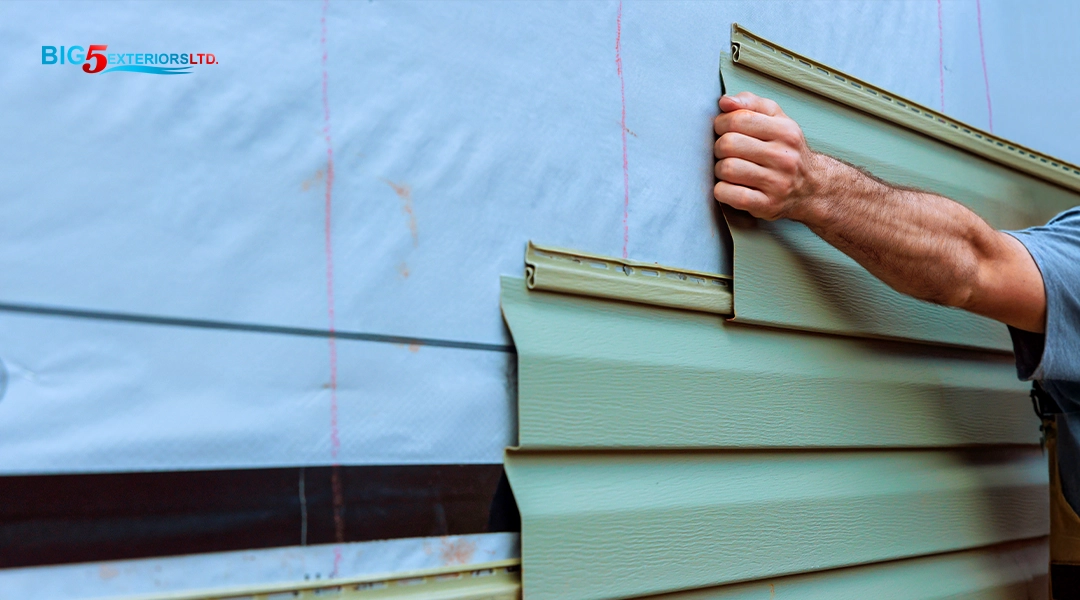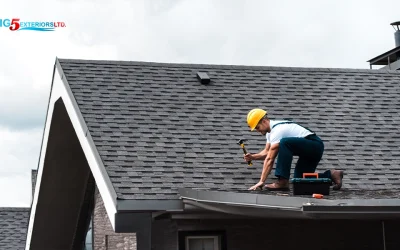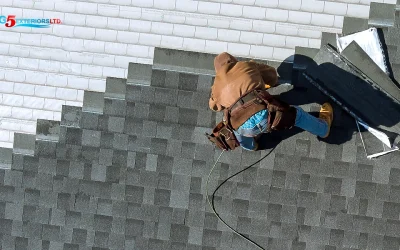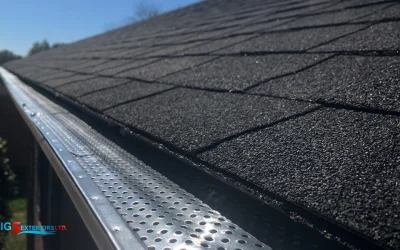Summary:
- Choosing the right siding can boost curb appeal and increase the value of your home. Some options also make your home more energy-efficient or resistant to the elements.
- For homeowners in Canada, siding is rarely one-size-fits-all. Your home type, style, budget, and location will influence your final decision. In regions like Alberta, you’ll need to consider the impact of harsh weather and wildfires.
- Budget-friendly options like vinyl and engineered wood are a great option for starter homes. They look nice, perform well, and won’t break the bank.
- For move-up homes, consider materials like fiber cement, stucco, and brick. You’ll pay slightly more, but still get longevity, energy-efficiency, and curb appeal compared to natural stone or wood.
- Luxury options, like natural stone and certain natural woods, are a great choice for estate homes. They’re more expensive, but offer show-stopping aesthetics. Fiber cement is also a great choice for these types of homes.
The materials you use for the exterior of your home matter, so choose them carefully. Installing the right siding will protect your home from damage and help define its character and style over the years. Some exteriors can also boost energy efficiency, lower your home heating bill, or help your property withstand the elements.
We’re here to help you narrow down your options so you don’t get intimidated. Learn more about affordable options like vinyl, as well as durable and beautiful fiber cement siding, so that you can see what’s most appropriate for your home.
See also: Is Your Home’s Exterior “Calgary Cold Front” Ready?
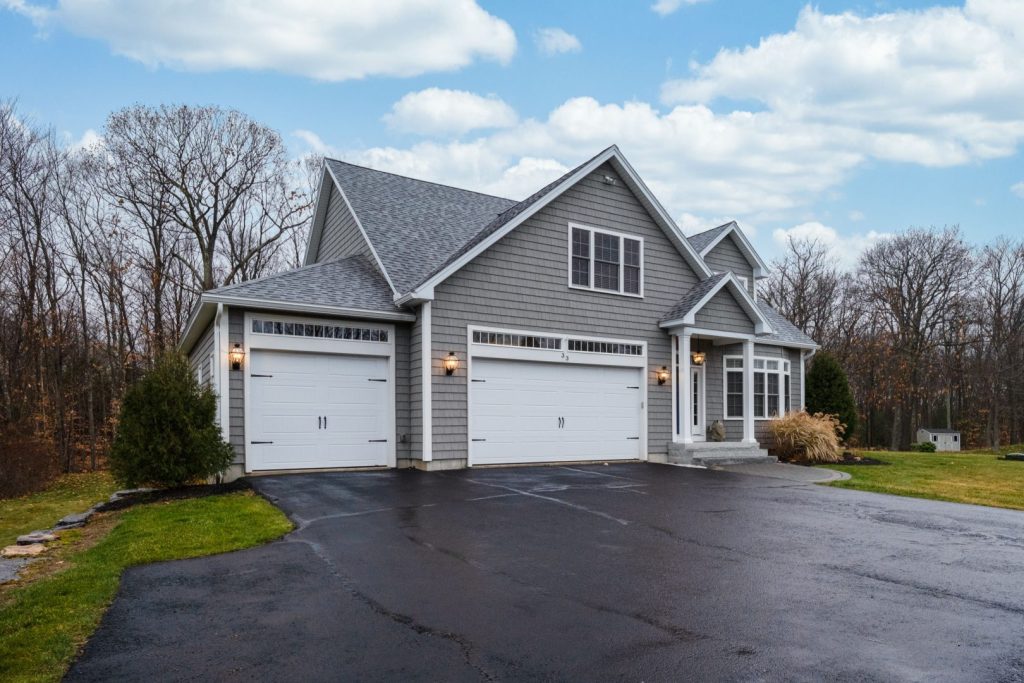
Canada’s Most Popular Siding Options At a Glance
Whether you’re totally new to home renovations, or you flip houses for a living, finding the best siding starts with understanding what’s out there.
Here’s a quick overview of the most common types of siding we install at Big 5—and what we consider before making a recommendation.
| Type of Siding | Specs | Popular Brands |
| Vinyl | – Water-resistant – Low-maintenance – UV-resistant – Lifespan: 20-40 years – R-value: 0.61 | – Gentek – Mitten – Kaycan – Westlake – Alside |
| Stucco | – Fire-resistant – Energy-efficient – High maintenance – R-value: 0.2-0.4 | – N/A — prepared by the installer. |
| Fiber Cement | – Water-resistant – Fire-resistant – Rot and insect resistant – Lifespan: 30-50 years – Extremely durable – R-value: 0.15 | – James Hardie – Allura – Finex |
| Engineered Wood | – Weather-resistant – Insect-resistant – Eco-friendly – Ideal for cold climates – Lifespan: 20-30 years – R-value: 0.62 to 0.83 | – LP SmartSide – KWP – Kaycan – Mitten – Maibec |
| Natural Stone | – Extremely durable – Fire-resistant – Natural thermal insulator – Lifespan: 100+ years – R-value: varies by stone type | – Canyon Stone – Fusion Stone – Gentek – K2 |
| Brick | – Extremely durable – Fire-resistant – Energy-efficient – Lifespan: 100+ years – R-value: 0.80 | – Novabrik – Permacon – I-XL |
| Natural Wood | – Stunning aesthetics – Water-resistant (when treated) – High-maintenance – Lifespan: 20-30 years – R-value: 0.90 to 1.25 (varies by type) | – Arriscraft – Ledgerock – Shouldice |
Homeowners in Alberta, and Canada as a whole, face unique challenges. Your siding must be able to withstand weather and climate differences like:
- Warm Chinook winds
- Cold snaps
- Heavy precipitation
- Harsh freeze/thaw cycles
Your budget, house type, and style matter, too. What’s affordable for one person may be too expensive or completely undesirable for another.
See also: 6 Gorgeous Homes with Vinyl & Hardie Board Siding
Best Siding for Starter Homes
There’s nothing more exciting than buying your first home—even if you have a tighter budget for renovations and upgrades like siding.
These affordable and effective siding options can help you save money without sacrificing too many features. Here’s what our team recommends:
Vinyl Siding
Vinyl is one of the most affordable siding options on the market. It comes in almost any color—and several patterns, including natural wood. If you’re looking for an option that’s cost-effective, you’ll want to explore this option first.
Pros:
- Very affordable.
- Ideal for sellers and other house flippers.
- Comes in many colors and patterns.
- Good for temporary needs and emergency installations.
Cons:
- Vinyl is made from polyvinyl chloride (PVC), which has low insulation unless upgraded (see below).
- Susceptible to cold weather and high winds.
- Not fire-resistant, which may make it more at risk during wildfires.
Some options on the market offset the lack of insulation factor associated with vinyl by injecting EPS foam into each panel. This can significantly improve the r-rating, but usually bumps up the total cost by around 30%.
Related: 6 Gorgeous Homes with Vinyl & Hardie Board Siding
Engineered Wood
Engineered wood siding is becoming more popular in some areas of Canada for its good looks and durability. Like fiber cement, it’s made from a mix of materials—in this case, waxes, adhesives, and binders. It’s available in multiple grains and colors, much like natural wood, but is a bit more durable.
Pros:
- Gives the appearance of natural wood with extra durability.
- Very resistant to cracking, breaking, or warping.
- Ideal for both cold and warm climates.
- Reasonably affordable compared to regular wood.
- Environmentally-friendly—no plastics.
Cons:
- Requires regular maintenance (painting or staining).
- Can be susceptible to moisture or mold when improperly sealed.
- Lower life span of around 30 years may be too short.
- Susceptible to fire and wildfire damage.
Siding made from engineered wood is also highly resistant to insect and impact damage, including hail.
Best Siding for Move-Up Homes
When starter homes don’t provide enough space, it’s time for a move-up home. They’re a little bit bigger, more comfortable, and more luxurious.
You’ll usually find the siding types below in the suburbs, where home value and aesthetics matter more—meaning that homeowners are usually willing to invest more in their exteriors.
Stucco
Stucco isn’t as popular throughout Canada as it is south of the border, but it’s still a fine choice for many Canadian homeowners. It’s typically made from a mixture of water, sand, and cement and you can customize it in virtually any color or texture.
Pros:
- Can last up to 50 years with proper care.
- Impermeability helps preserve the home’s envelope.
- Can be customized in color and texture.
- Highly resistant to heat and fire.
Cons:
- Performs better in warm climates than cold.
- Not particularly useful as an insulator.
- Much higher upfront costs for installation.
- Requires more maintenance and repairs.
- May be susceptible to moisture damage.
Still love the stucco look, but don’t want to sacrifice the insulation factor? Exterior Insulation and Finishing Systems (EIFS), sometimes called synthetic stucco, are a nice compromise. The process starts with installing multiple layers of insulation and cladding onto your exterior first. Stucco is applied on top, locking everything in place.
Brick
Brick siding provides a good balance of durability, aesthetics, and cost. It’s one of the best ways to get that same warm, inviting look associated with natural stone without paying an arm and a leg. Most bricks are formed from an incredibly tough and highly durable mix of clay that insulates really well, even in a cold snap.
Pros:
- One of the most durable siding options on the market.
- Lifespan of up to 100+ years, in some cases.
- Provides excellent insulation from the cold and heat.
- May help to lower your energy or gas bill over time.
- Can be customized in many colors and patterns.
- Resistant to both insects and rodents.
Cons:
- Costly to install compared to vinyl or fiber cement.
- While durable, can crack or break from impacts or hail.
- Extreme weight makes structural support critical.
- Inflexible after installation—best for permanent siding.
There’s a common misconception that homeowners are locked into one color forever after installing brick siding. That may put some people off from ever considering it in the first place. No need to commit! Brick can actually be painted or stained to suit almost any preference or style—and adjusted again later on.
Best Siding for Estate Homes
Estate homes can be a major investment, but they really deliver on both aesthetics and style. These larger mansions are not just houses—they’re often works of art in their own right. When you own one of these dream homes, everything has to be just right, especially your exterior. Only the best of the best will do.
Fiber Cement (Hardie Board)
Fiber cement siding is a popular choice for Canadian homeowners—especially in Alberta’s sometimes harsh climate. Learn more about getting your home’s exterior ready for Calgary’s cold fronts.
Viewed from a distance, fiber cement looks similar to premium vinyl or painted wood. But fiber cement panels are actually made from an incredibly tough and resistant combination of cellulose fibers, cement and sand. It’s suitable for luxury homes, but is also affordable enough to be a great option for most move-up homes as well.
Pros:
- Lifespan of up to 50+ years in some areas.
- Nearly impervious to flame, making it wildfire-proof.
- Texture and color are easily customized.
- Warp, crack, wind, and shear-resistant.
- Surprisingly affordable for so many benefits.
Cons:
- Can be affected by extreme cold.
- Not as insulating as some other options.
- Requires regular maintenance, including painting.
- Very heavy and may take longer to install.
But the extra weight of fiber cement isn’t always a bad thing, even if it does mean installation takes more time. It’s also part of the reason this siding is more resistant to damage.
Related: Vinyl Siding vs. Wood Siding vs. Hardie Board Siding vs. Stucco
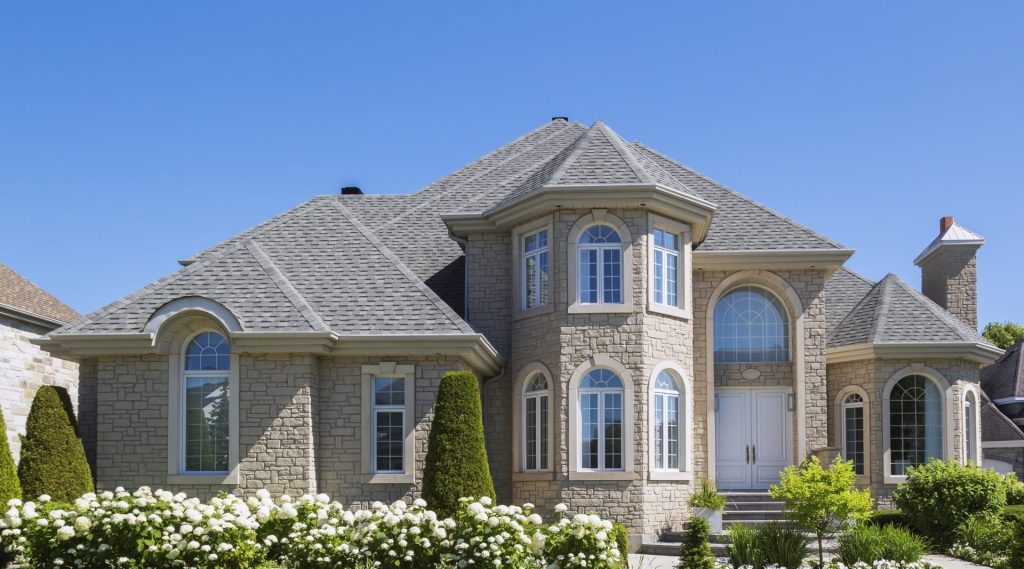
Natural Stone
Natural stone is an incredibly timeless and beautiful choice for sprawling estates and larger heirloom homes. Materials like granite, slate, and limestone will turn your home into your castle, and are as elegant and luxurious as they are inviting. This is the kind of material you install when you want high-value real estate properties to stand out.
Pros:
- Extremely durable and resistant to damage.
- Provides good thermal insulation.
- Virtually fire-proof and fairly resistant to harsh weather.
- Can be installed in custom patterns, in some cases.
- Unique, earthy and natural appearance.
Cons:
- Very high upfront installation costs (stone is expensive).
- Extremely heavy—may need extra structural support.
- Installation can be labor-intensive or require special equipment.
- Stone availability on the market is inconsistent.
If you want a home with a truly show-stopping exterior, natural stone is truly one of the best options out there. It may be expensive, but this is one case where you truly get what you pay for!
Natural Wood
It’s hard to deny the beauty and aesthetics of natural wood. It’s the exterior of choice for Alberta’s most dazzling chalet homes in the mountains, but looks equally good on a cozy home in the suburbs. Not only does it have great curb appeal, but it’s also more warm, inviting and authentic-feeling than synthetic siding alone.
Pros:
- Timeless and historic, like taking a page out of history.
- Can be painted or stained to customize or protect.
- Provides decent insulation ratings compared to other options.
- Each tree species carries its own grain and look.
- Environmentally-friendly if sourced sustainably.
Cons:
- Requires yearly maintenance and quick attention to repairs.
- All wood is susceptible to UV rays, moisture, mold, and insects.
- Also susceptible to lichen and moss infiltration over time.
- Life span depends on maintenance and care practices.
- Extremely susceptible to fire—unsuitable for wildfire zones.
Natural wood can bring character and warmth to your home, but these drawbacks can feel like too many potential pitfalls. Our advice is to think of your relationship with wood siding like a partnership: keep it well-maintained, and it will give you back years of enjoyment in kind.
Big 5 Can Help You Choose the Right Siding
At Big 5, we know it’s important to help you explore your options without disrespecting your budget or your time. Whether you’re replacing siding after a bad storm and need to save, or you want to outfit your brand-new estate with natural stone, your business is valuable to us and we’re happy to help.
Contact us to get a free quote on your siding project. With over 30 years of experience serving the Calgary market, we have the experience to make your next project a reality fairly and on-time. We’re committed to providing no-nonsense, no-hassle business practices to every client.
Frequently Asked Questions about Siding
How often does my siding need to be replaced?
There’s no clear-cut single answer to this question. It depends on the type of siding you have, how well you maintain it, and whether you encounter any damage along the way. Here’s a quick look at the average lifespans we expect to see for the most common types of siding:
- Vinyl: 20-30 years
- Engineered Wood: 20-30 years
- Fiber Cement: 30-50 years
- Brick: 100+ years
If durability and longevity are important to you, get in contact with us at Big 5. We can walk you through each option and tell you how likely it is to hold up over the years.
What is the best siding for Alberta’s extreme weather?
Fiber cement, engineered wood, and brick are all excellent choices, and should hold up to hail, high winds, and extreme cold very well. Options like vinyl are more prone to cracking when temperatures drop sharply or swing from warm to cold.
How do I maintain vinyl siding so it lasts longer?
Occasional inspections for damage and periodic power washer cleaning sessions during the warmer weather months are a great place to start. This will remove dirt, debris, and other unsightly substances. Avoid power-washing in cold temperatures, as ice can form and crack the panels.

